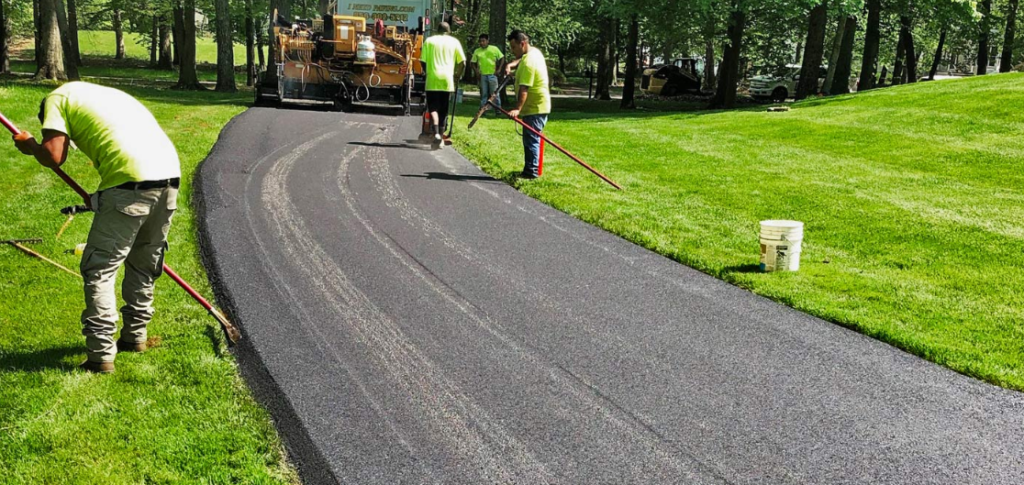Key Takeaways
- Proper asphalt maintenance can significantly prolong the life of pavements.
- Frequent evaluations assist in spotting possible issues before they become more serious.
- Cost-effective solutions exist for homeowners and businesses alike.
Table of Contents
- Understanding Asphalt Maintenance
- Importance of Regular Inspection
- Common Asphalt Issues and Solutions
- Benefits of Sealing Asphalt
- Best Practices for Asphalt Patching
- Innovations in Asphalt Repair Technology
- Cost-Effective Strategies for Long-Term Maintenance
- Environmental Considerations in Asphalt Care
Understanding Asphalt Maintenance
Asphalt maintenance is crucial for the structural integrity and safety of surfaces used by pedestrians and vehicles. It should be tailored to specific environments and usage patterns, such as heavy snowfall or sunnier climates. A comprehensive maintenance approach includes immediate and long-term preventive measures to mitigate future repairs, protect investment, and extend the surface’s lifespan. Proper asphalt maintenance is essential for ensuring the durability of roadways, driveways, and parking lots, as they bear the brunt of weather, traffic, and natural wear. Regular upkeep can prevent costly repairs and interruptions to daily operations. Whether managing city infrastructure or parking lot paving La Porte IN, it’s vital to recognize the importance of maintaining these surfaces effectively.
Regular asphalt maintenance is crucial for safety and aesthetic appeal in residential and commercial spaces. A well-maintained pavement exudes professionalism and care, optimizing functionality and proving economically beneficial in the long run. This article explores proper asphalt maintenance’s top strategies and benefits for informed decision-making.
Importance of Regular Inspection
The foundation of every successful asphalt maintenance program is routine inspections. They allow for the early detection of surface wear and tear. Stress from traffic load, environmental conditions, and time all contribute to subtle deterioration that may not be visible initially but can develop into significant issues if ignored. By catching these potential problems early, you can promptly address them through minor repairs or seal coating, avoiding costly full-scale renovations. Regular check-ups eliminate risks associated with accident-prone surface imperfections in commercial spaces where safety is paramount.
Common Asphalt Issues and Solutions
Asphalt surfaces are prone to several common issues, including cracking, potholes, and poor drainage. Cracks, often a result of excessive surface stress, can lead to water infiltration and subsequent erosion. Potholes appear when the underlying base fails, exacerbated by standing water and freeze-thaw cycles. Drainage problems, on the other hand, can lead to pooling water and accelerating surface wear. Proactively addressing these issues can involve cracking sealing, applying overlays, or improving drainage systems to ensure water is efficiently directed away from the surface.
Benefits of Sealing Asphalt
Sealing is one of the most effective and widely advocated methods of asphalt maintenance. A seal coat is a barrier that protects against environmental harm, such as oil leaks, UV rays exposure, and water seepage. Applying sealant every couple of years ensures surface aesthetics are preserved and minor cracks are sealed, preventing them from growing larger. Research strongly supports the cost-effectiveness of seal coating. You might explore this informative guide to understand seal coating practices better.
Best Practices for Asphalt Patching
Addressing small surface cracks and holes right away can prevent more extensive damage. Asphalt patching involves removing damaged sections and filling them with a new asphalt layer. However, successfully patching asphalt requires more than just filling the hole. The patch must seamlessly blend with the existing surface to ensure durability and visual consistency. Using cutting-edge technologies like infrared patching allows for a more robust repair that withstands temperature fluctuations and heavy usage.
Innovations in Asphalt Repair Technology
Increasing reliance on technological advancements has transformed traditional approaches to asphalt repair. Infrared repair technology, for instance, offers quick and efficient solutions. It involves heating existing asphalt, making it malleable, and allowing new asphalt to be compounded into the old surface, creating a seamless, enduring finish. This method is especially beneficial in minimizing downtime and inconvenience for facility users. This insightful article provides a comprehensive look at infrared techniques.
Cost-Effective Strategies for Long-Term Maintenance
Long-term asphalt care doesn’t have to be costly if it is strategically planned and executed. Investing in high-quality materials, adopting routine inspection schedules, and implementing vital maintenance measures can extend surface life while minimizing overall costs. Property managers may consider a life-cycle costing approach, which examines the total repair and maintenance cost over the asphalt’s lifespan. Adopting this approach can guide prudent financial decisions.
Environmental Considerations in Asphalt Care
As environmental awareness increases, incorporating sustainable materials and practices into asphalt maintenance becomes imperative. Utilizing recycled materials, opting for green paving solutions, and reducing emissions during repairs are just some measures that contribute to eco-friendly asphalt maintenance. Such practices align with broader efforts to reduce environmental footprints while maintaining community infrastructure. These green initiatives are crucial in promoting sustainability without compromising efficiency and quality.

